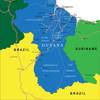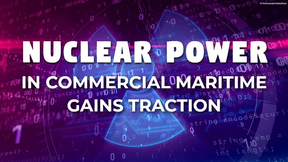White House Escalates China Trade Dispute in hopes for Early Solution: Kemp
The United States has adopted an "escalate to negotiate" strategy towards China, threatening a dramatic hike in tariffs to try to force a resumption of trade talks while the U.S. economy remains strong and as elections approach in November.
U.S. President Donald Trump has reportedly rejected a plan to levy tariffs of 10 percent on an additional $200 billion of imports from China and ordered aides to prepare a proposal for tariffs at the higher rate of 25 percent.
The levies are in addition to the tariffs on $34 billion of imports that have already gone into effect and the $16 billion of tariffs announced but not yet implemented.
The administration's approach to China is the same one it has employed in dealing with North Korea, Iran, the European Union and NAFTA partners.
The basic strategy, including the risks and opportunities, will be familiar to anyone who has studied the Cold War confrontation with the Soviet Union (“On escalation: metaphors and scenarios”, Kahn, 1965).
The administration’s decision to escalate the confrontation dramatically at this point, threatening significant tariffs on a wide range of imports, including consumer items, is likely to stem from a combination of strength and fear.
- ESCALATION DOMINANCE
So far, the trade war appears to have hit China’s economy and financial markets harder than the United States, which has given the administration confidence that it is escalating from a position of strength.
The U.S. S&P500 equity index is up by more than 5 percent since the start of 2018, and 25 percent since the start of 2017, while China's Shanghai composite index has fallen by 13 percent and 7 percent respectively.
The U.S. dollar has strengthened by 5 percent against China's yuan since the beginning of the year and has risen by around 3 percent on a trade-weighted basis against the currencies of other major U.S. trading partners.
China’s economy has shown signs of slowing, with the central government resorting to fiscal and monetary stimulus to offset the slowdown in external demand and boost confidence.
In contrast, the U.S. economy expanded at an annualised rate of 4.1 percent in the second quarter, the fastest for almost four years, according to advance estimates (https://tmsnrt.rs/2O3VJZS).
U.S. manufacturers have reported a broad-based upturn in business activity in recent months, while consumer confidence is close to multi-decade highs.
The asymmetric economic and financial performance of the United States and China has convinced the White House it has "escalation dominance" and should press home its advantage.
The White House strategy has been to escalate pre-emptively, secure in the belief China has more to lose than the United States on each of the next few rungs up the escalation ladder.
Until now, China has matched U.S. tariff moves but not sought to escalate them, which has also probably also emboldened the White House to think it holds a stronger position on the escalation ladder.
- TEMPORARY ADVANTAGE?
But if the White House thinks it is escalating from a position of strength, it probably also fears strength may not last forever and could diminish the longer the conflict lasts.
Rapid U.S. GDP growth in the second quarter was mostly the result of tax cuts, which stimulated consumer spending, as well as a race to export soybeans and beat the tariffs.
Growth in the third and fourth quarters is likely to be slower as these temporary effects unwind and the baseline for quarter-on-quarter comparisons becomes more challenging.
Economic expansions tend to be cyclical, and even within each expansion there are spurts of rapid growth followed by more sluggish intervals, so the administration cannot count on the recent spurt to be sustained.
Businesses are already starting to report widespread increases in input costs, in part as a result of steel and aluminium tariffs. Consumer price inflation is also rising and starting to erode the real value of wage rises.
So far, the administration has tried to avoid imposing tariffs on consumer items in order to avoid politically controversial price rises at retail level.
But if the United States is forced to carry out its threat and actually imposes 25 percent tariffs on $200 billion worth of additional items from China, hitting consumer goods will become inevitable.
Until now, senior administration officials have made great efforts to reassure investors and businesses that (a) tariffs are unlikely to be imposed; (b) even if imposed, the economic impact will be small; (c) the economy is strong enough to weather any hit; and (d) the short-term pain is worth the long-term gains from resetting relations with China.
If the White House is forced to carry out its threat to extend 25 percent tariffs to a much wider range of items, however, the fallout will be greater and pose a more serious test of resolve for investors and businesses.
- CREATING A CRISIS
Part of the strategy seems to be to intensify the pressure on China quickly through rapid escalation in the hope it will force an early restart of negotiations on advantageous terms and permit de-escalation quickly, before the economic damage becomes too great.
If the White House can secure an early resumption of negotiations, or an early settlement, even a partial one, it will feature heavily in the political campaign ahead of congressional elections as a successful example of the president's tough negotiating style.
The administration therefore has a strong incentive to escalate quickly in the hope of forcing a favourable outcome well before the country goes to the polls in November.
For the White House, the economic and political cycles favour rapid escalation in the hope of being able to claim an equally quick victory before the costs start to rise.
By bringing the conflict to a crisis (in the Greek sense of "a moment of decision") the administration hopes to end the dispute or at least de-escalate before the damage grows.
China's reaction remains uncertain, however, which introduces a dangerous element into the escalation strategy and means it could backfire.
China's economy is under greater pressure in the short term but its policymakers may conclude that it is better to absorb the short-term costs and wait for the pressure to start to mount on the United States.
In the end, tariffs are a tax on consumers, and if high tariffs go into effect on consumer items, and are sustained for any length of time, the economic and political fallout could be considerable.
There are already some preliminary signs that the global economic expansion has started to slow under pressure from higher oil prices and the costs and uncertainty created by the trade conflict.
If the United States chooses to escalate rapidly while China elects to ride out the attack and wait for the costs to rebound on the U.S. and global economies, the damage to both as well as third countries could be extensive.
By John Kemp











